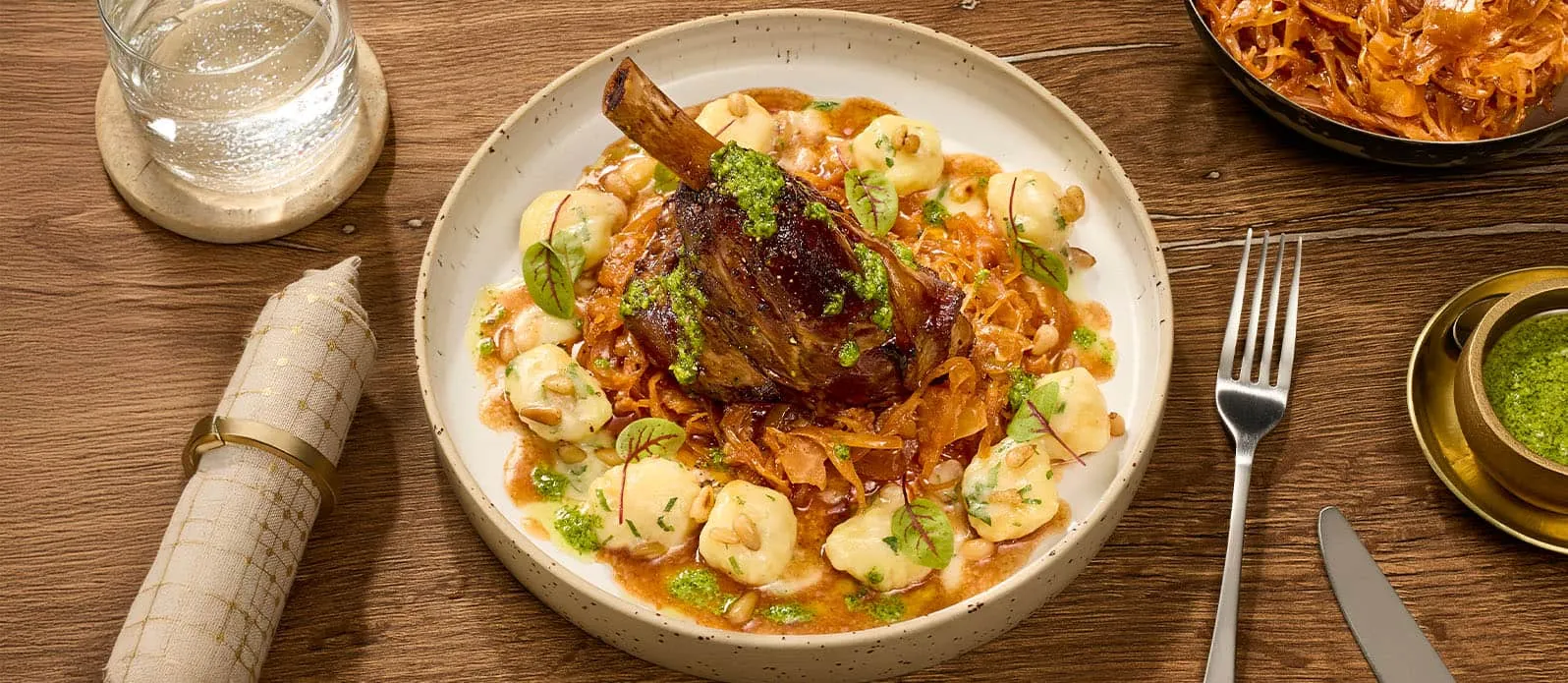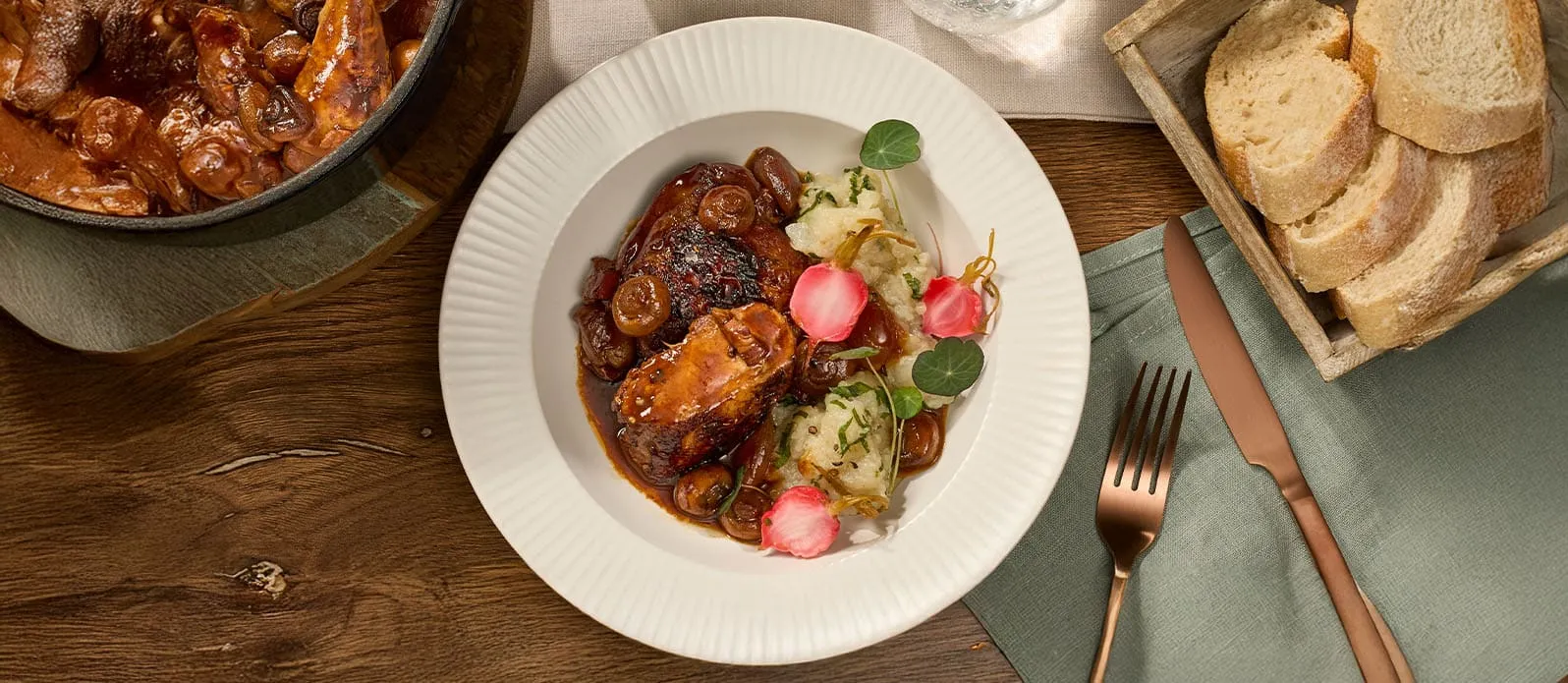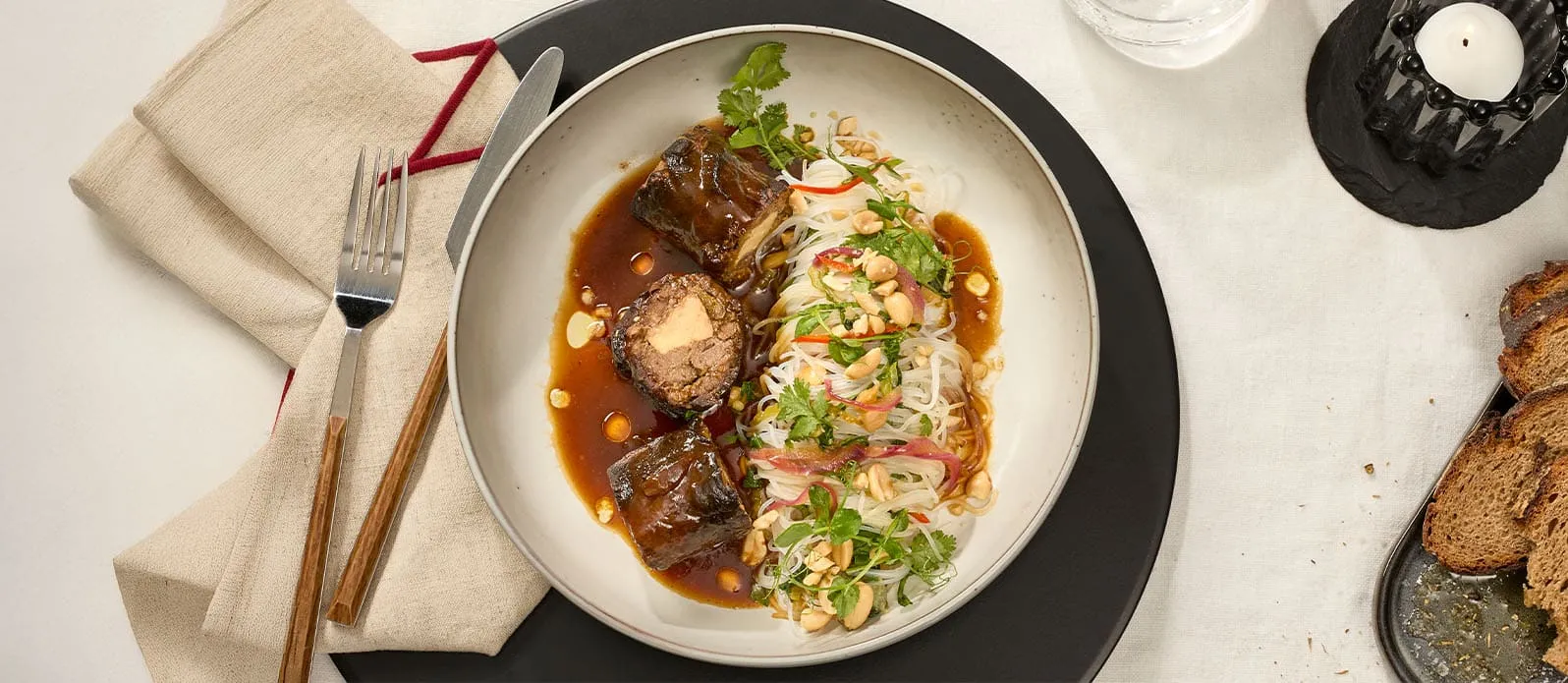5 tips for greater sustainability in your restaurant and the food service industry
07. November 2024

Sustainability—a term that's been on everyone's lips for several years. A term that's no longer associated solely with "hippies" or "eco-warriors" but now influences the everyday choices and consumption patterns of many. And that's just one reason why not only food service producers like us at Kikkoman but also food vendors are placing more focus on sustainability.
Because while guest preferences are one thing, personal convictions are another. Unfortunately, there seem to be more environmentally friendly options available to individuals and their lifestyles than for companies. We've put together 5 suggestions to help make your restaurant and the food service industry more sustainable.

What is sustainability?
Originally, the term sustainability only referred to the use of resources. Acting sustainably meant meeting one's resource needs without compromising the natural regenerative capacity of ecosystems. In simple terms—a forester would only fell as much timber as the forest could replace.
This definition still holds true, but nowadays, many people understand the term more broadly. Sustainable development considers three key aspects: ecological load-bearing capacity, economic efficiency and social justice. When a company claims that it wants to act more sustainably, all three dimensions should be on its agenda. The aim is to meet the needs of the present without compromising the ability of future generations to meet their own needs, preserving global resources for the long term.
How can food service professionals make their restaurants and businesses more sustainable?
Acting in a socially and economically sustainable way is often the easiest part for many companies. But what can you do to achieve ecological sustainability? Here are some concrete tips to help you get started.
Tip 1: Use green electricity in an energy-saving way
One of the first and easiest steps for restaurants and similar businesses is to switch to electricity from renewable sources. This option is becoming increasingly affordable and less vulnerable to price fluctuations as Europe continues to expand its clean energy infrastructure.
In addition, food vendors should look for ways to save electricity wherever they can. LED lights, for example, consume far less power than traditional bulbs, and lighting should only be used when and where it's really needed. Installing motion sensors in lavatories or corridors can further help reduce consumption.
Kitchen appliances should also be checked for their energy efficiency class—ovens and dishwashers, in particular, can be serious energy guzzlers. Modern, energy-efficient models may require a higher initial investment, but they reduce operating costs over the long term.
And while it may sometimes be inconvenient, turning off heating and ventilation in dining areas or the kitchen after closing time makes a difference for both sustainability and energy bills. If remembering to do this every night is a hassle or you're forgetful, you might consider using timers for these appliances.
Tip 2: Avoid small portion packaging
In cafés, sugar and biscuits often come individually wrapped with a latte macchiato, French fries arrive with single-use sachets of mustard and ketchup, and soy sauce only ever comes in a plastic fish? It doesn't have to be this way!
Food vendors could offer sustainable choices, like refillable dispensers for sauces or seasonings. These not only save resources but are usually more visually appealing, too. It's no coincidence that Kikkoman's iconic double-spout glass table bottle has won a design award and is even featured in museums in New York and Germany.
If small-portion packaging is essential for hygienic or practical purposes, food vendors should still pay attention to the materials used. Cardboard, glass and continually recyclable materials such as aluminium or biodegradable alternatives are significantly more sustainable than single-use plastic, for example.

Tip 3: Buy local and shorten supply chains
Many restaurants now prioritise regional products and suppliers, and for good reasons. One being the desire to guarantee quality and compliance with legal requirements. Products from the EU are particularly known for their high quality, as they are subject to strict regulations and must meet high standards.
The same goes for products typically associated with foreign countries. For instance, our Kikkoman soy sauces aren't flown in from Japan but are made locally in Europe, mostly with regional ingredients. The reason for this is the same as why many restaurants prefer local products: shorter supply chains play an active role in reducing CO2 emissions, especially when ingredients or goods would otherwise need to travel long distances by air or sea.
Many food vendors also make a point of communicating their conscious choice of ingredients, which many guests appreciate. Menus and websites of snack bars, restaurants and food trucks often directly name the suppliers of vegetables, fish, meat, wine and other ingredients. This signals to customers that the hospitality industry is taking responsibility.
Tip 4: Adapt your menu to the season
You've likely come across the phrase "with vegetables of the season" on menus worldwide. Though frequently overlooked, these words already represent an important step towards sustainability. Because opting for seasonal products helps protect the environment by cutting down on long-distance transportation. What's more, seasonal produce grows more naturally without human intervention, such as the use of greenhouses, which generate emissions.
So, by using seasonal vegetables, food vendors not only show their flexibility in the kitchen but also their concern for the environment. And it's not just about vegetables or side dishes.
Restaurant owners who prefer not to revise their entire menu can swap ingredients in desserts or soups to make seasonal adjustments. And yes, even fish and seafood have their seasons, which can be reflected in recipes.
An added bonus! Seasonal foods often taste better because they are harvested at the peak of ripeness and contain more nutrients and antioxidants. And the best part is that they are usually cheaper because of shorter transport distances and higher availability.

Tip 5: Avoid food waste
According to the European Commission for Food Safety, over 6 million tonnes of food are discarded in the EU's out-of-home sector every year. That's a whopping 15 kilos per person!
This troubling statistic has prompted many in the food industry to take action through various means. Two of these are the sustainable concepts of "nose-to-tail" and "leaf-to-root". As the names suggest, these involve making full use of an animal or plant, thus minimising waste.
Embracing this concept allows everyone in the catering sector to reap numerous positive effects. Not only does it help to cut waste in your own operation, effectively combat food waste and reduce climate-damaging emissions, but it also encourages the inventive use of ingredients and fosters a greater appreciation for food. Openness is crucial here—not everyone will be comfortable preparing chicken offal or pig trotters, let alone getting guests to sample them. However, for those who are open to experimenting, it can add diversity and flavour to the menu. Or do you already know how carrot top pesto tastes?
Hospitality professionals can minimise waste not only when preparing dishes but also with meals that have already been cooked. Apps like Too Good To Go and ResQ are popular among many consumers.
The principle behind these platforms is as simple as it is ingenious: restaurants and cafés, as well as bakeries and supermarkets with fresh food sections, use the apps to list surplus food that would otherwise be discarded at the end of the day. Users of the app can request this food and collect it during a designated time frame for a nominal fee, thereby saving money while helping to reduce waste for the restaurant owners. A win for everyone!
And if you're still not convinced, the apps also serve as a good advertising tool for restaurants and the like! Since they work on a location-based system, they draw local customers' attention to nearby restaurants while offering an inexpensive sampling of the dishes typically on offer.

Everyone can do their bit
No matter whether your business takes small or large steps towards sustainability, its impact on the environment will always be significant. We hope our tips will not only help you reduce your ecological footprint, but also lower your operating costs while enhancing your culinary creativity and quality.









![[Translate to Englisch (EU):] [Translate to Englisch (EU):]](https://www.kikkoman.eu/fileadmin/_processed_/c/0/csm_F1095-recipe-page_Venison_with_kimchi_potato_strudel_Desktop_Header_48d8788290.webp)
![[Translate to Englisch (EU):] [Translate to Englisch (EU):]](https://www.kikkoman.eu/fileadmin/_processed_/5/a/csm_F1096-recipe-page_Venison_ossobuco_with_sweet_potato_puree_Desktop_Header_18aae1c2b7.webp)
![[Translate to Englisch (EU):] [Translate to Englisch (EU):]](https://www.kikkoman.eu/fileadmin/_processed_/6/8/csm_F1097-recipe-page_Teriyaki_wild_boar_noodle_broth_Desktop_Header_d865a2f347.webp)
![[Translate to Englisch (EU):] [Translate to Englisch (EU):]](https://www.kikkoman.eu/fileadmin/_processed_/a/c/csm_F1098-recipe-page_Kimchi_risotto_with_crispy_goose_breast_Desktop_Header_c80fcbd4ec.webp)
![[Translate to Englisch (EU):] [Translate to Englisch (EU):]](https://www.kikkoman.eu/fileadmin/_processed_/e/d/csm_F1099-recipe-page_Goose_tacos_with_salsa_and_caramelised_squash_Desktop_Header_71f122e2f3.webp)


